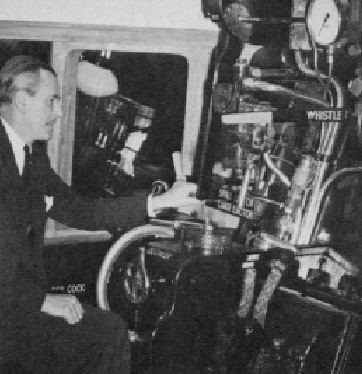Nationality British Died June 18, 1983 Role Engineer | Name Robert Riddles | |
 | ||
Born 23 May 1892 ( 1892-05-23 ) Institution memberships | ||
Engineering discipline Locomotive Engineering | ||
Robert Arthur "Robin" Riddles, CBE, MIMechE, MinstLE (23 May 1892 – 18 June 1983) was a British locomotive engineer.
Contents
LNWR and LMS
Riddles was born in 1892 and entered the Crewe Works of the London and North Western Railway as a premium apprentice in 1909, completing his apprenticeship in 1913. While attending the Mechanics Institute classes he took a course in electrical engineering, feeling there would be a future for electric traction. During the 1914–18 Great War he served with the Royal Engineers mainly in France, during which time he was badly wounded.
He returned to the LNWR at Crewe, and in 1920 became the "bricks and mortar assistant" with responsibility for the new erecting shop. When work on this was stopped, Riddles was placed in charge of a small production progress department and was sent to Horwich to study the methods used by the L&Y. From this Riddles gained some backing, and had significant influence in the re-organisation of Crewe which took place between 1925 and 1927. In 1923 the LNWR became part of the London, Midland and Scottish Railway thus on completion of the work at Crewe, Riddles was sent to the ex-Midland Railway works at Derby, now part of the LMS, to initiate a similar arrangement. In this task he had the active support of the then Derby works manager, H. G. Ivatt.
During the General Strike in 1926 Riddles volunteered as a driver, taking trains from Crewe to Manchester and Carlisle. The experience gained made him almost unique among CMEs; Riddles maintained that the practical knowledge of driving a locomotive that he gained was an invaluable aid to his design work.
In 1933 Riddles moved to Euston to become Locomotive Assistant to the new Chief Mechanical Engineer, Sir William Stanier, and in 1935 became Stanier's Principal Assistant. In 1937 Riddles moved to Glasgow as Mechanical & Electrical Engineer - Scotland, the first to combine both engineering disciplines in a single title. However Riddles was disappointed that C. E. Fairburn was at this time appointed as Stanier's Deputy.
Ministry of Supply
In 1939 with the Second World War having just started, he moved to the Ministry of Supply, becoming Director of Transportation Equipment, and later designed the WD Austerity 2-8-0 and WD Austerity 2-10-0 locomotives.
Return to LMS
In 1943 he moved to the post of Chief Stores Superintendent at the LMS - it has been said that he was anxious to get back into the railway business. On the death of Charles Fairburn in 1944 he applied for the position of Chief Mechanical Engineer, but the job went to George Ivatt, with Riddles being promoted to Vice-President of the LMS.
British Railways
Upon the creation of the Railway Executive in 1947 in preparation for the nationalisation of the railways in 1948, he was appointed Member of the Railway Executive for Mechanical and Electrical Engineering. He had two principal assistants, both of whom were also former LMS men: Roland C. Bond, Chief Officer (Locomotive Construction and Maintenance), and E. S. Cox, Executive Officer (Design). The duties of these three effectively covered the old post of Chief Mechanical Engineer; they subsequently oversaw the design of the British Railways (BR) standard classes.
Retirement
Riddles retired in 1953 on the abolition of the Railway Executive, and became a director of Stothert & Pitt of Bath, cranemakers.
Riddles was succeeded as Chief Mechanical Engineer of BR by J.F. Harrison.
